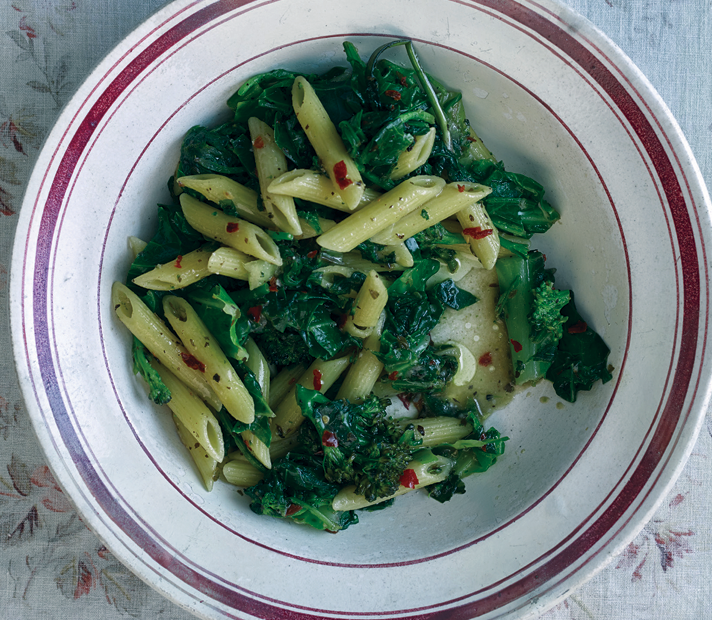Pasta recipes are versatile and can quickly feed a crowd when increased accordingly. Another benefit to pasta is it often is a safe bet when hosting a dinner party that includes people who follow vegan or vegetarian lifestyles. Furthermore, with the abundance of “alternative” pastas available, even individuals who must go gluten-free can indulge without worry.
Fresh greens paired with pasta deliver an abundance of nutrients to the meal. This recipe for “Penne With Seasonal Greens” from “The Contented Vegan” (Head of Zeus) by Peggy Brusseau includes a variety of seasonal greens, but they can be modified to taste or with whatever fresh produce is available at the market.
Penne With Seasonal Greens
Serves 4
2 tablespoons untoasted sesame oil
16 cups chopped mixed seasonal greens, such as cavolo nero, tatsoi, mustard greens, dandelion leaves, Tenderstem, or purple sprouting broccoli, small amounts of spinach, arugula, and chicory
1 tablespoon dried basil
1 tablespoon dried oregano
1 fresh chili, finely chopped, or 1⁄2 teaspoon chili flakes
1⁄4 teaspoon ground nutmeg
1 whole garlic bulb, cloves separated and chopped
1 pound, 2 ounces dried penne
Extra virgin olive oil for drizzling
Pour the oil into a large (4-liter/16 cup) saucepan. If you don’t have one, use the largest pan you have and fill it with greens. Press and pack the chopped greens into the pan. It should be absolutely full!
Cover the pan and place over a medium-high heat for 5 minutes.
If you have used a smaller pan, add the remaining greens and the herbs, spices and garlic. There will be room — the greens will reduce in bulk very quickly. Reduce the heat to medium and cook for 12 to 15 minutes, stirring occasionally.
Meanwhile, bring a large pot of water to a boil. Add the penne and cook according to the packet instructions until just tender. Drain the pasta into a colander and return it to the hot pan. Stir the greens through the pasta and serve, drizzling a little extra virgin olive oil over each serving.
Note: You will notice that some greens produce more juices than others when they are cooked. This is normal and depends on how fresh the greens are as well as which specific plant is used. Romaine lettuce and bok choy, for instance, release more juices than broccoli or white cabbage; but all greens release some. You can make adjustments to the amount of liquid by adding 1-2 tablespoons water or sauce, if needed; or by adding a few cherry tomatoes.








Recent Comments